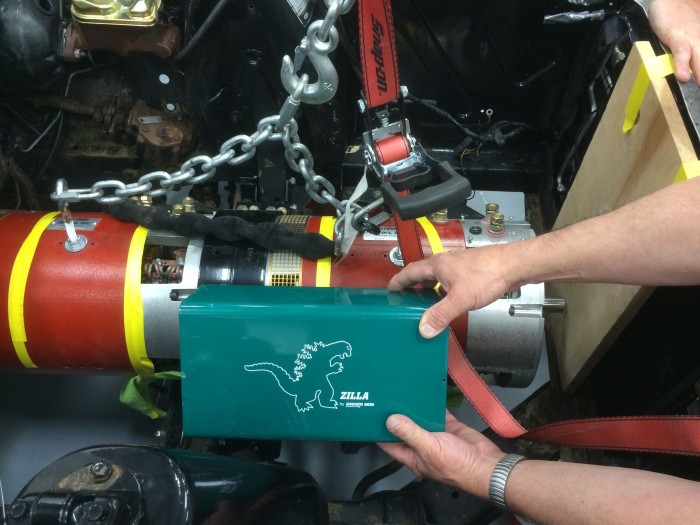Classic car enthusiasts have taken many different approaches to building, restoring and maintaining vintage iron in order to keep older cars on the road today. Although it seems most enthusiasts are content to restore their vintage cars back to original factory specifications, there are also those who feel the need to “improve” their cars a bit and it is not totally unusual that some would desire to put a modern chassis and drivetrain underneath the skin of an otherwise vintage vehicle. A classic car with a vintage appearing exterior and modern running gear underneath it could provide both classic looks and modern performance.
Considering that many of today’s newest vehicles utilize electric, or hybrid electric powerplants, it is not surprising that a few creative enthusiasts would want to update their vintage cars with electric power under the hood. More electric experiments have begun to show up at car shows, club meets and of course, on the Internet lately. So far, the movement toward electrifying older cars has been small and mostly confined to vintage vehicles of lesser values, as few owners would consider committing the sacrilege of hacking up a perfectly good classic car from the 60s or 70s in order to install electric motors. It almost goes without saying that the owners of truly valuable muscle cars like classic Chevelles, Camaros, Mustangs and Challengers would never ever consider replacing their treasured stock drivetrains with low-performance modern electric running gear. However, it now appears one shop in Oregon is proposing just that.
Oregonian John Wayland’s Bloodshed Motors plans to offer turn-key muscle car classics with an electric twist. However, John’s electrically converted classics will not suffer from low-performance, as he is converting classic muscle cars into electric vehicles with nearly three times the horsepower as stock. Wayland began his adventures with electric power by converting a 1972 Datsun 1200 he calls “The White Zombie” into a competent drag racing machine powered by two electric motors fed by a bank of lithium-ion batteries. Many people have seen John’s White Zombie Datsun on YouTube, where it trounced many gas-fed cars on its way to a National Electric Drag Racing Association record run of 10.40 seconds @ 117.21 mph.
With the opening of Bloodshed Motors, John plans to take his electric adventures a step further, and is now taking orders for converted muscle cars made from classic Mustangs, Camaros and Challengers. The power will come from dual 11-inch electric motors, an overdrive transmission, and a battery pack that will deliver about 120 miles of range. Wayland estimates his electric conversion creations will produce about 750 horsepower and about 1,800 pound-feet of torque, a combo that should allow the cars to cover the quarter-mile in about 10-seconds. Far from being Spartan racing-only machines, Wayland’s modern muscle classics will also feature ride-friendly suspensions, disc brakes at all four corners and air conditioning and power steering too.
While the huge power of the converted Bloodshed muscle cars should be enough to make potential customers forget about the loss of tried-and-true gasoline powerplants under the hood, the price tag may not. A complete, turn-key electric muscle car will cost about $200,000 to $250,000 if Bloodshed supplies the base car. If the customer supplies his own car, the cost will be a little less, but Bloodshed prefers to supply the cars in order to ensure the shop has a good vehicle to start building on. For those enthusiasts who think it would be a crime to cut-up an intact and very valuable vintage muscle car to install electric power, Bloodshed Motors has stated that it will convert only six-cylinder or small-block powered muscle cars so that the dwindling supply of big-block muscle cars on the market is not affected. A restored muscle car with 750 electric-powered horses under the hood may not be everyone’s cup of tea just yet, but you have to admit it is creative, and as time marches on it is a good bet that we’ll see more, and not fewer, “electric classics” roaming the streets and strips.

